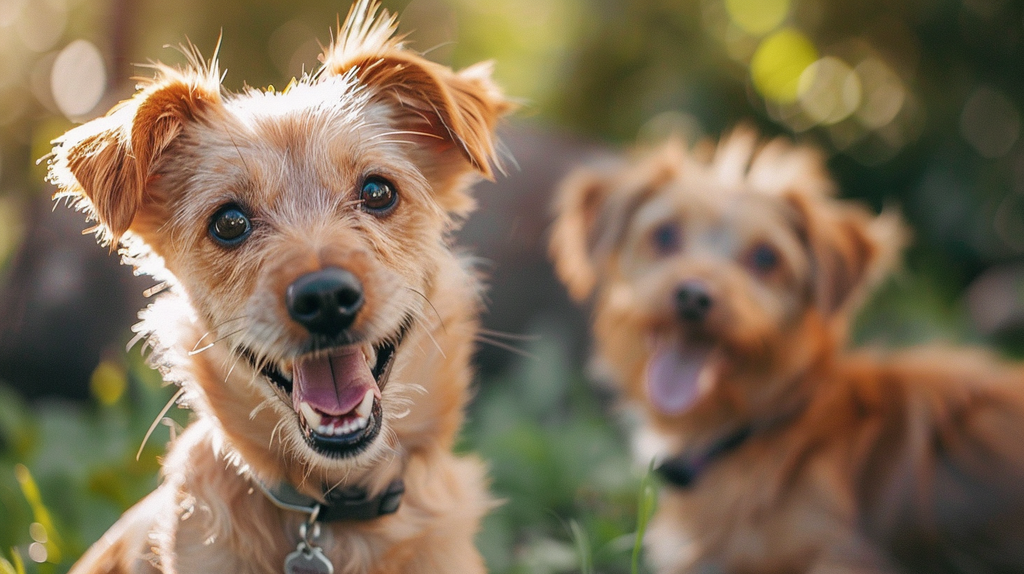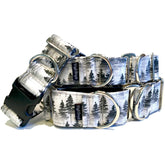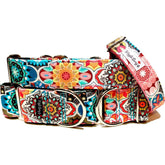Adopting a Second Dog: Key Considerations for Success

- Key Takeaways
- Considerations for Adopting a Second Dog
- Financial Implications of Owning Two Dogs
- Space and Accommodation Needs
- Assessing Your Current Dog's Reaction
- Choosing the Right Companion for Your Family
- Introducing a Second Dog to Your Household
- Training Essentials for Cohabitation
- Managing Resource Guarding and Behavior Issues
- Time and Commitment Required for Multiple Dogs
- Summary
-
Frequently Asked Questions
- What should I consider before adopting a second dog?
- How will my current dog react to a new dog?
- Is it more expensive to have two dogs?
- How do I choose the right second dog for my family?
- What are some tips for introducing a second dog into my home?
- What kind of training will both dogs need after we adopt our second dog?
- How can I manage resource guarding between my two dogs?
Thinking about adopting a second dog? It's not just double the cuddles and playtime—it's also twice the responsibility. While the idea of your furry friend having a constant companion is heartwarming, it’s crucial to weigh the pros against the potential challenges. From ensuring both dogs get along to considering additional costs and time commitments, there are several key factors that can make or break this decision. This post dives into what you need to think over before making your family a little bigger with another four-legged member. We’re here to guide you through these considerations, helping you decide if adopting another pup is right for you and your current pet.
Key Takeaways
-
Before adopting a second dog, evaluate your financial readiness to handle the increased expenses, including food, vet care, and potential emergencies.
-
Assess your living space to ensure it can comfortably accommodate another dog, taking into account the size and energy levels of both dogs.
-
Observe your current dog's behavior and temperament to predict how they might react to a new companion, aiming for a harmonious match.
-
Choose a second dog whose personality and energy level complement those of your existing pet and family, considering factors like breed, age, and activity level.
-
Properly introduce the new dog to your household and current pet through gradual, supervised interactions to foster a positive relationship.
-
Be prepared to invest additional time in training and managing behaviors such as resource guarding, ensuring both dogs feel safe and valued in their shared environment.
Considerations for Adopting a Second Dog
Evaluate Reasons
Before adding another furry friend to your family, it's crucial to reflect on why you want another dog. Many people consider adopting a second dog for companionship for their first pet or to bring more joy into the household. However, it's essential to ensure that your reasons align with the capacity to provide care and attention both dogs will need.
Adopting a second dog should not be a spur-of-the-moment decision. Think about whether you're looking for your current pet to have a playmate or if you personally desire the company of another dog. This reflection helps in making an informed choice that benefits everyone involved.
Age and Energy Levels
The age and energy levels of both your current pet and the potential new addition are critical factors. Dogs at different life stages have varying needs and activity levels which can impact how well they get along.
For instance, pairing an energetic puppy with an older, more sedate dog might lead to frustration on both sides. The puppy may want constant play, while the older dog prefers quiet time. Ideally, aim for matching temperaments and energy levels as closely as possible to foster harmony in the home.
Increased Responsibilities
Welcoming another dog means doubling up on responsibilities — from vet visits to daily walks and feeding times. It's important not only financially but also in terms of time management.
-
Financially, expect increased costs such as food, medical care, grooming, and possibly even daycare.
-
Time-wise, two dogs mean double the walks, training sessions, playtime - essentially double everything related to care.
Consider these aspects seriously before deciding:
-
Do you have enough space?
-
Can you afford additional expenses?
-
Are you ready for increased daily duties?
Financial Implications of Owning Two Dogs
Vet Bills
When you decide to bring a second dog into your home, expect vet bills to double. Each dog will need regular check-ups, vaccinations, and possibly medication for unexpected illnesses. This can add up quickly.
For example, if one dog gets sick, there's a chance the other might too. Treating both can strain your wallet more than you might anticipate. It's not just about twice the love; it's also about twice the responsibility and cost.
Food Costs
Feeding two dogs means buying more food. The type of food matters too. Some dogs may have special dietary needs that require expensive brands or types of food.
You'll notice your grocery bill increasing significantly with an additional furry friend around. Remember, it’s not just any food; quality matters for their health and well-being.
Grooming Expenses
Grooming expenses are another area where costs will rise with two dogs in the house. Depending on their breed, some dogs need professional grooming regularly.
This includes haircuts, nail trimming, and sometimes even teeth cleaning which isn't cheap. If both your dogs require such care often, be prepared for these costs to stack up.
Pet Insurance
Consider getting pet insurance for both dogs to help manage some expenses better.
-
Pros: It can cover unexpected medical issues and routine care.
-
Cons: Premiums increase with each pet added.
Pet insurance could save you money in the long run but research different plans carefully before deciding.
Unexpected Health Issues
Budgeting for unexpected health issues is crucial when owning two dogs.
-
Sudden illnesses or accidents can happen at any time.
Setting aside a specific amount monthly as an emergency fund is wise planning.
Space and Accommodation Needs
Assessing Space
Before adopting a second dog, it's crucial to look at your living space. Ask yourself if two dogs can move around without bumping into each other or furniture. Dogs need their own space to feel secure.
Having enough room is more than just indoor space. Think about where the dogs will sleep. Will they share a bed, or do you need to buy another? Some dogs enjoy sharing, while others prefer their own territory.
Outdoor Exercise
The need for outdoor exercise cannot be overstated. Dogs thrive on regular walks and playtime in open spaces. If you have a backyard, is it big enough for two? Not all homes come with large outdoor areas.
For those without big yards, proximity to parks becomes vital. Parks offer ample space for your dogs to run and explore safely off-leash under supervision. It’s important that both of your furry friends get enough physical activity daily.
Assessing Your Current Dog's Reaction
Observe Behavior
Observing your current dog's behavior around other dogs is crucial. It tells you a lot about how they might react to a new family member. Look for signs of friendliness, like wagging tails and relaxed body language. But also watch out for negative signals.
Dogs that growl or show stiff body language when near other dogs might struggle with a newcomer. These signs indicate discomfort or even aggression. Understanding these cues early can save you from potential issues later on.
Consult Professionals
If you're unsure about your dog's reaction, consulting with a professional trainer or behaviorist is wise. They have the expertise to interpret your dog’s behaviors accurately. Plus, they can offer personalized advice based on what they observe.
Professionals can also suggest training methods to improve social skills before adopting another dog. This step ensures both pets start off on the right foot.
Gradual Introduction
Prepare for a gradual introduction process between your current and new dog. Rushing this process could lead to stress and conflict between them.
Start by allowing them to sniff each other under controlled conditions, perhaps during walks where both are distracted and less likely to focus solely on each other. Praise positive interactions generously to reinforce good behavior. Below are key steps in introducing dogs:
-
Initial meeting in neutral territory
-
Supervised interaction at home
-
Gradually increasing their time together as they become more comfortable
This approach helps build a positive relationship from the start.
Choosing the Right Companion for Your Family
Temperament Match
When adopting a second dog, it's crucial to consider both dogs' temperaments. A calm dog might not enjoy the company of a hyperactive one. Likewise, two high-energy dogs could be too much for some families to handle.
Look for signs of compatibility during their meeting. Do they play well? Are there any signs of aggression? Observing their interaction can give you valuable insights into their future relationship. Remember, every dog has its unique personality, just like humans do.
Activity Levels
The activity levels of your current and potential new dog should align closely. If your family enjoys long hikes, make sure both dogs can keep up. Conversely, if you prefer more relaxed activities at home, find a dog that matches this lifestyle.
Mismatched energy levels can lead to problems down the line. The more active dog may become bored and destructive while the other could get overwhelmed and stressed out.
Breed Traits
Certain breed-specific traits should be considered when adopting another dog. Some breeds are naturally more sociable with other dogs and humans alike; others might have strong hunting instincts that could cause issues if you have smaller pets at home.
Research is key here. Understand both breeds’ characteristics before making a decision. This knowledge will help ensure a harmonious household for everyone involved.
Size Matters
Size differences between your current pet and the new addition can pose challenges but aren't always deal-breakers.
-
Pros: Smaller dogs often look up to larger ones as leaders.
-
Cons: There’s a risk of injury during playtime due to size disparity.
To mitigate risks:
-
Supervise early interactions carefully.
-
Teach commands like "gentle" to encourage safe play.
Choosing the right companion involves considering all these factors: temperament, activity level, breed traits, and size differences among them. By taking these into account, you’ll increase the chances of forging a lasting friendship between your pets, making life happier for everyone in your household.
Introducing a Second Dog to Your Household
Neutral Territory
Meeting on neutral ground is key. This means choosing a place neither dog considers their own. A park works well.
Start with both dogs on leashes, handled by two people. This keeps things safe and controlled. Let them sniff and explore each other without forcing interaction. It's about letting them get comfortable at their own pace.
Supervised Interactions
Close supervision is crucial in the early days. Even friendly dogs can have moments of jealousy or misunderstanding.
Keep initial meetings short and sweet. Watch for signs of stress or aggression from either pet. Always intervene gently if tensions rise.
Pace Setting
Dogs need time to adjust to big changes like this one.
Allow them to set the pace for getting acquainted. Some may become fast friends, while others take longer to warm up.
Don't rush the process; patience is your best friend here.
Training Essentials for Cohabitation
Basic Commands
Training your dogs involves more than just teaching them to sit or stay. It's about communication and respect. Start by reinforcing basic commands with each dog separately. This individual attention helps in understanding their unique learning pace and needs.
Teaching commands like "sit," "stay," and "come" separately ensures they understand you are in charge, not the other dog. Once both dogs respond well individually, practice commands together. This dual training reinforces that they must listen even in the presence of another dog.
Clear Rules
Setting clear rules from day one is crucial when adopting a second dog. Dogs thrive on structure; knowing what is expected of them reduces anxiety and potential conflicts.
Establish boundaries such as no jumping on furniture or entering certain rooms without permission. Make it clear which behaviors are acceptable and which aren’t. Consistency from all family members in enforcing these rules makes the learning process smoother for both dogs.
Consistency Matters
The golden rule in training multiple dogs is consistency. Your pets need to understand that rules apply at all times, not just when you feel like enforcing them.
Consistently rewarding good behavior and correcting bad ones teaches them what’s expected of them quickly and effectively. Remember, mixed signals can confuse your dogs, making it harder for them to follow your lead.
Managing Resource Guarding and Behavior Issues
Early Monitoring
Adopting a second dog means watching their interactions closely. Look for signs of aggression or possessiveness between them. This early detection is key to preventing serious conflicts.
Aggression can show up in many ways. Growling, snapping, or blocking access to toys are common signs. It's important to spot these behaviors quickly. Addressing them early helps maintain peace at home.
Command Training
Teaching your dogs commands like "leave it" and "wait" is crucial. These commands help you control situations that could lead to conflict over resources such as food, toys, or attention.
For example, if one dog tries to take the other’s toy, saying "leave it" redirects their focus towards you instead of escalating tension with the other dog. Similarly, "wait" can teach patience and turn taking during feeding times or play sessions.
Separate Feeding Areas
Minimizing competition for food is essential when adopting a second dog. Providing separate feeding areas for each dog can prevent resource guarding from developing.
You might place their bowls in different rooms or feed them at separate times. This approach ensures both dogs feel safe while eating without feeling threatened by the other's presence.
Here are some benefits of using separate feeding areas:
-
Reduces stress during meal times
-
Prevents aggressive confrontations over food
-
Allows each dog to eat at their own pace without pressure
However, remember this process requires patience and consistency from you as an owner.
Time and Commitment Required for Multiple Dogs
Training Sessions
Adopting a second dog means more training. You'll need to spend time on both individual and joint sessions. This ensures they listen, behave well, and get along.
Individual training strengthens your bond with each dog. It also addresses their unique needs. Joint sessions help them learn to cooperate as part of a team.
One-on-One Time
Scheduling personal time with each dog is crucial. It shows them they're valued as individuals. This can be walks, playtime, or just cuddles.
This practice prevents jealousy and helps maintain peace at home. Each dog feels special and understood.
Long-Term Commitment
Caring for multiple dogs is a lasting responsibility. Understand this commitment before adopting another pet.
It's not just about the good times but also handling challenges together.
Summary
Adopting a second dog is like doubling the love in your home, but it also means doubling the responsibility. You've got to think about the cash, space, and how your current furry friend will take to a new buddy. It's not just about picking any dog; it's about finding the right match that'll blend into your family like peanut butter with jelly. From the get-go, introducing them properly, ensuring they're cool living together, and tackling any jealousy or food fights are crucial steps to a harmonious home.
Remember, it's all about giving these pups a happy life while keeping your sanity intact. So, if you're ready to double down on the doggy love and tackle the challenges head-on, go for it! Just make sure you're prepared for the extra walks, belly rubs, and yes, the occasional chaos. Ready to expand your pack? Start visiting those shelters and meet your next four-legged family member today!
Frequently Asked Questions
What should I consider before adopting a second dog?
Think about the cost, space, your current dog's personality, and how much time you can dedicate. It's like adding another member to your family - it requires planning and commitment.
How will my current dog react to a new dog?
Your current pup might feel jealous or threatened at first. Imagine someone suddenly sharing your favorite couch without asking. Introduce them slowly and monitor their interactions closely.
Is it more expensive to have two dogs?
Yes, think of it as doubling the grocery list. More food, vet visits, toys... you get the picture. Budget wisely!
How do I choose the right second dog for my family?
Consider energy levels, size, and temperament that match not just your family’s lifestyle but also your first dog’s personality. It's like finding a new roommate; compatibility is key.
What are some tips for introducing a second dog into my home?
Start with neutral ground meetings before moving in together—sort of like going on group dates before deciding to share an apartment.
What kind of training will both dogs need after we adopt our second dog?
Focus on basic obedience training for both individually and then together. It helps establish rules and build mutual respect - think of it as team-building exercises for pups.
How can I manage resource guarding between my two dogs?
Set clear boundaries and provide separate resources (food bowls, toys) initially. Gradually teach them to share under supervision - imagine teaching kids that sharing is caring.


















































































































